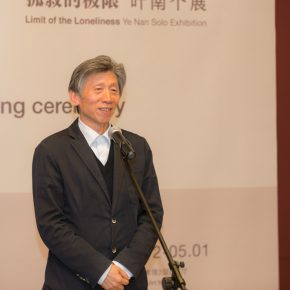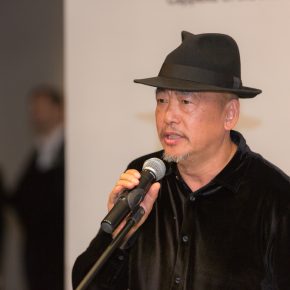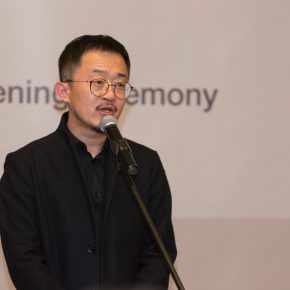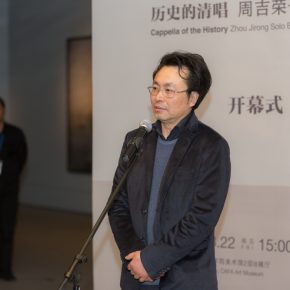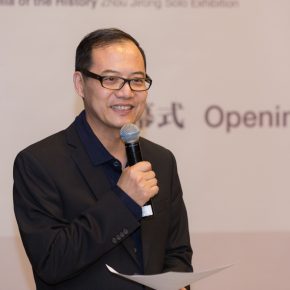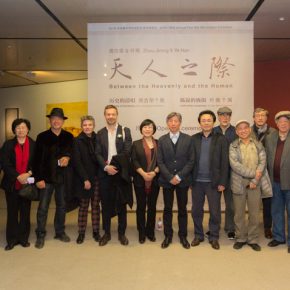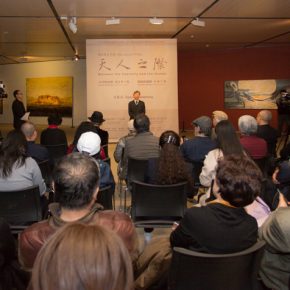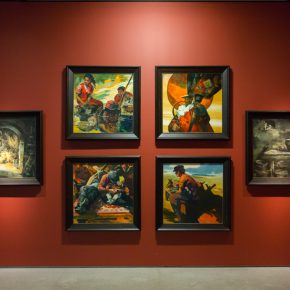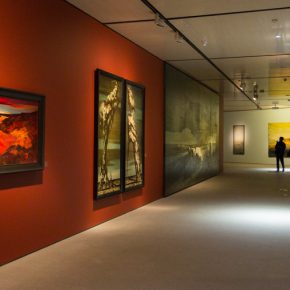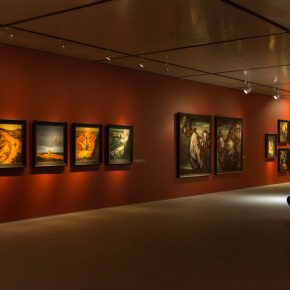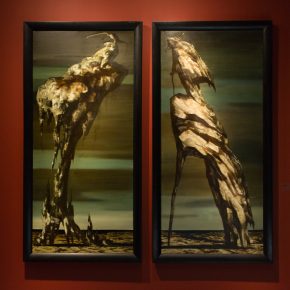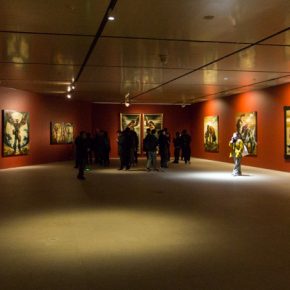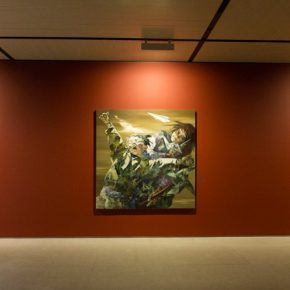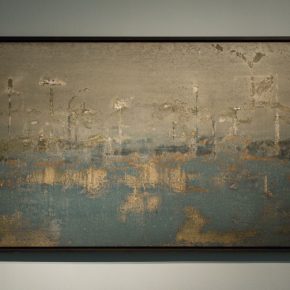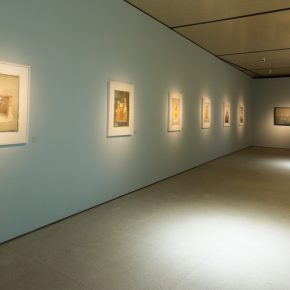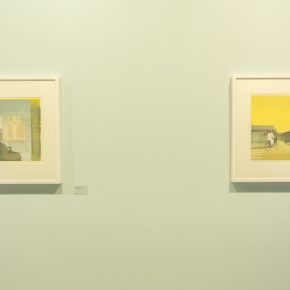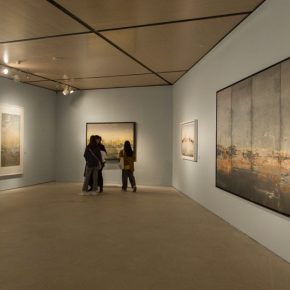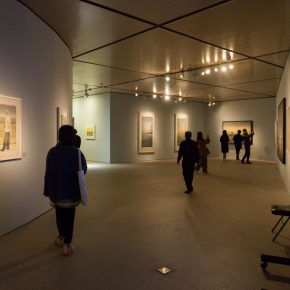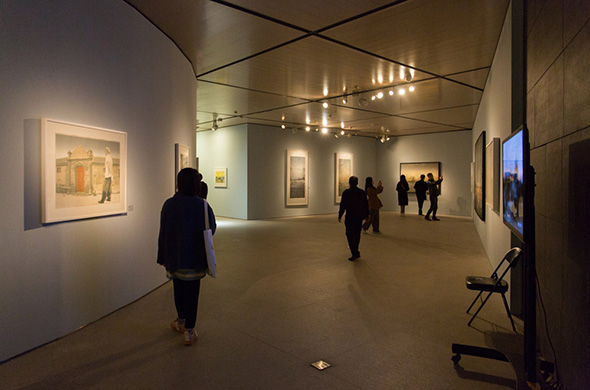
The Central Academy of Fine Arts (abbr. CAFA) attaches great importance to the in-depth exploration into its faculty members’ teaching and creative research. There are also a large number of teachers who are active in the front line of art education and they have formed their own unique creative language and teaching philosophy. To comprehensively demonstrate the outstanding achievements by the teachers from the Central Academy of Fine Arts to society, the annual nomination exhibition of CAFA started to present two solo exhibitions since 2010. It has become the annual brand of academic exhibitions of the Central Academy of Fine Arts, which has received extensive attention and praise from universities and society. In order to achieve the goal of a new splendid century of CAFA, the art education of plastic arts requires the nominees to combine their teaching with creative research while fulfilling the duties of teachers and artists, and implement the spirit of the letter from General Secretary Xi to the professors of CAFA.
On March 22, 2019, hosted by the Central Academy of Fine Arts, School of Plastic Arts of CAFA and the CAFA Art Museum, the “2019 CAFA Plastic Arts Annual Nomination Exhibition, Zhou Jirong & Ye Nan: Between the Heavenly and the Human” was unveiled at CAFA Art Museum. The exhibition invited President Fan Di’an as its academic advisor, and Associate Professor Liu Libin as its curator to manage the exhibition. The exhibition showcases prints and oil paintings by Zhou Jirong and Ye Nan who work at the School of Plastic Arts.
Fan Di’an, President of the Central Academy of Fine Arts, attended the opening ceremony of the exhibition and delivered a speech. He said that the two nominated professors were Zhou Jirong and Ye Nan, they are simple and devoted to teaching and creation. “Being honest” is the common perspective of these two artists and their art. Professor Zhou Jirong has developed in the era of printmaking, and he inherits excellent printmaking traditions on the one hand, expressing his true perception and experience with art, and on the other hand, he also keeps an eye on innovation in artistic language and constantly pursues new realms and new styles. From the 1980s, he began to integrate his feelings of Beijing’s historical changes into his creations, and his forms are either small or grand, expanding from one-dimensional to multi-dimensional in connotation. His feelings about the city, his depiction of nature, and the expression of the bright and splendid mood in the picture, all indicate that he is not simply describing life and recording reality, but integrating the artist’s feelings into his experience and pursuit. In the space of “Between the Heavenly and the Human”, he thinks and expresses his feelings. Another artist, Ye Nan, was one of the earliest representatives of artists who studied abroad sponsored by a national scholarship during the reform and opening up period. She studied and was involved in an exchange at the Repin Academy of Fine Arts in Russia for many years. She has added a philosophical way of thinking based on her research of the Russian and Soviet realist art traditions, and what’s more in her creations, is the historical consciousness. In her works, historical thinking, realistic attention, life experience, and women’s concerns are all blended together, and her works are creations with a rich language. In this sense, she is also standing on occasion with “Between the Heavenly and the Human.”
At the same time, President Fan Di’an also stressed that as the national team of Chinese art education and art creation, every teacher and even the students of the Central Academy of Fine Arts should stand at the forefront of the epoch, feel the changes of the epoch, and portray the progress of the epoch, especially injecting profound consciousness and humanistic concerns into the works, making new contributions to the development of the creation and research of the Central Academy of Fine Arts in the new epoch.
Wang Huaxiang, Deputy Dean of the School of Plastic Arts at the Central Academy of Fine Arts, mentioned in his opening speech that as a teacher and artist based in art colleges and universities, excellent teaching and excellent creation should be equally developed and they should support each other. This is also the positive connotation from the nomination exhibition at the School of Plastic Arts today and in the future. The two artists participating in the exhibition have taught in the Department of Printmaking and the Fundamental Department. Zhou Jirong pays attention to the changes of the city. He uses different media to express his concern for the urban changes in different periods, thoughts on questions and the meaning of nostalgia, which leaves an everlasting cappella in history. Ye Nan’s oil paintings express the existence of life and the strength of nature with a body full of tension, calm and rich colors, and thinks about life from here. The commonality of the two artists lies in the calm thinking of the problem and their philosophical artistic language. They hold the quiet artistic mood even when confronted with today’s complicated society, which is very valuable in the current epoch of global information and images.
The theme of this nomination exhibition is “Between the Heavenly and the Human”, and the Curator Liu Libin explained that this was quoted from Sima Qian’s “Reply to Ren An”, “The Adventures of Heaven and Man, the Change of the Ancient and the Modern, Becomes the Word of One School,” with which he intended to summarize the concepts of time and space and history in China. In the view of Liu, under the impact of “post-research” in the 1990s, the “grand view of history” has encountered unprecedented challenges, reflected in the art world, which is highlighted in the “new generation” of art and emergence of political pop art. On the contrary, creations of Zhou Jirong and Ye Nan echoed the “grand historical view”, and they have their own unique features. Zhou Jirong pays attention to the urban space and social psychological space in his works. He also highlights the presence of “empty silence” in his works. With the variegated traces of special paper and brush friction, he reduces the traces of history and creates a “place with no one” and plays the “cappella of the history.” Ye Nan, through the shaping of the characters between the sky and the earth that constitute a stable structure of large and small “crosses” to resist the horror and awe of time and space. “Someone is present” does not bring excitement, but rather highlights the “l(fā)imit of the loneliness.”
This exhibition will remain on view till May 1.
Text by Zhang Wenzhi, translated and edited by Sue/CAFA ART INFO
Photo by Hu Sichen/CAFA ART INFO


